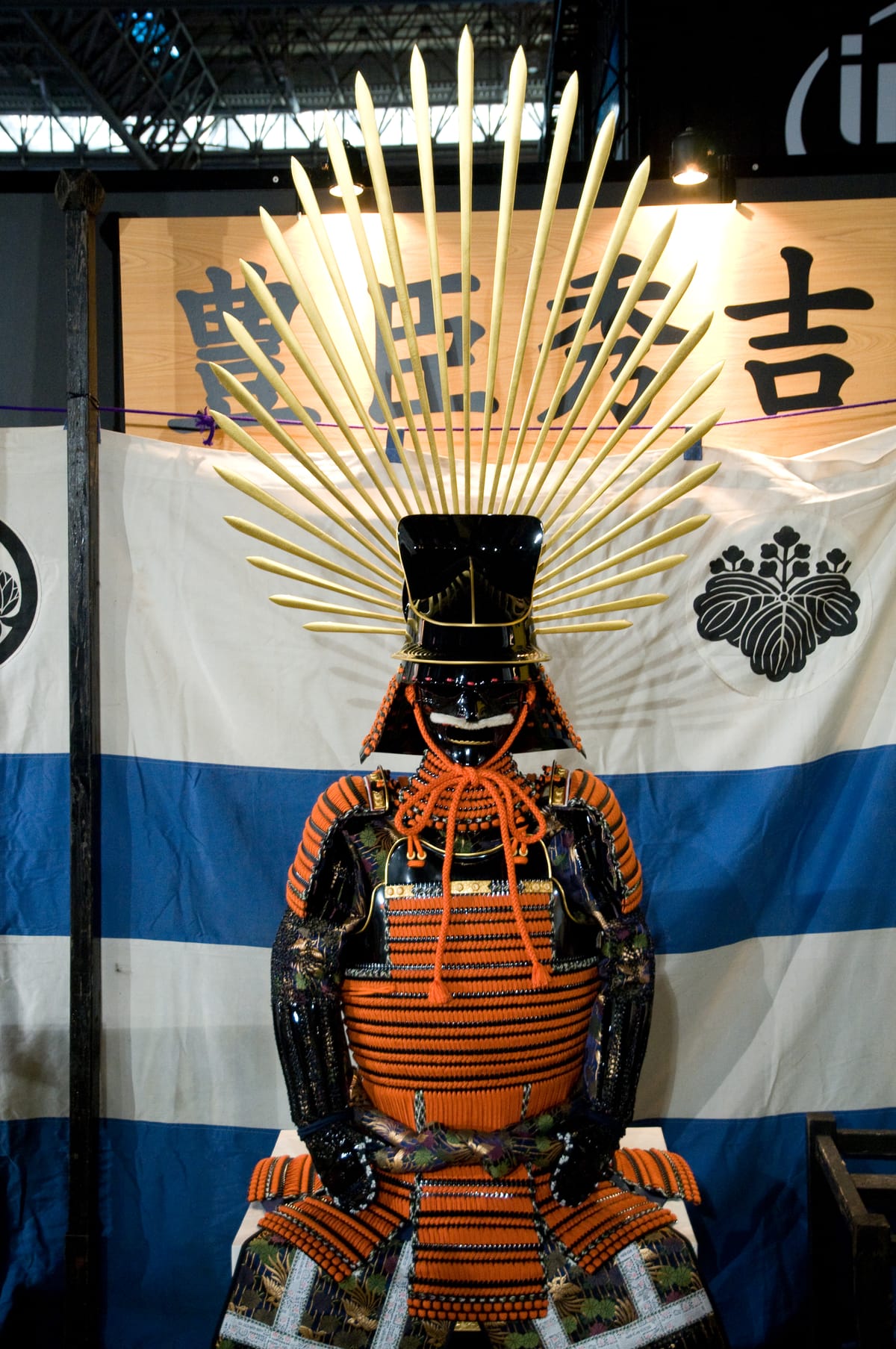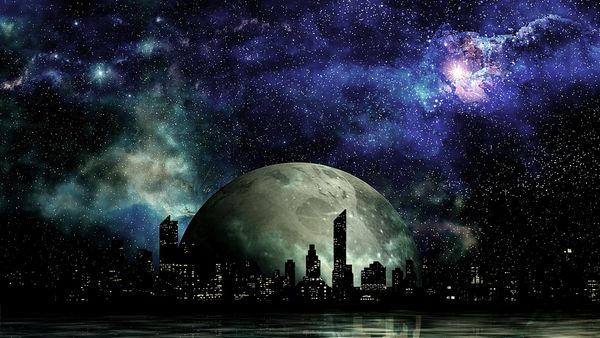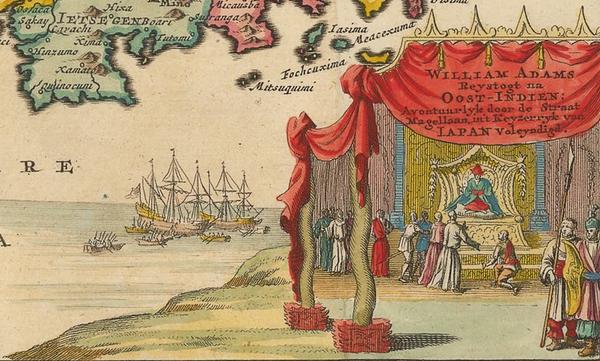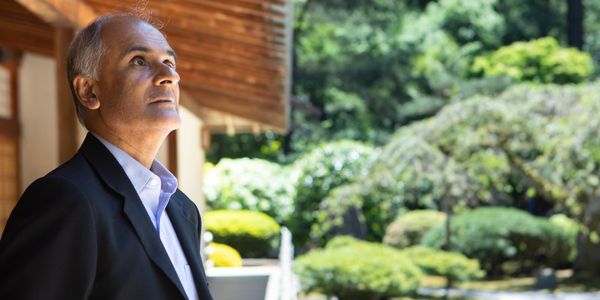Shōgun's Historical Background
The famous samurai Toyotomi Hideyoshi, born a peasant, first unifies Japan under his rule and then launches a massive invasion of Korea that changed the course of history forever.

A previous post introduced James Clavell’s novel Shōgun as a fictionalized — but largely historically accurate — account of a famous period in Japanese history.
Due to Japan’s connection with expanding European colonial activities, the establishment of global trade routes from both the west (around Africa via India) and the east (across the Pacific via the Americas), and the Jesuits’ ongoing aggressive religious activity throughout Asia — as well as Japan’s massive invasion of Korea, towards taking China, no less! — it is also arguably one of the most fascinating and complex periods in all of world history.
Prior to 1600 — the Unification of Japan
These three samurai (Hideyoshi was actually born a peasant) controlled Japan at a crucial time in its history.
- Oda Nobunaga (1534 – 1582)
- Toyotomi Hideyoshi (1537 – 1598)
- Tokugawa Ieyasu (1543 – 1616)
Starting in 1568, Nobunaga conquers Kyoto and begins the unification process. He is assassinated in 1582, but his two favorite generals, Hideyoshi and Tokugawa Ieyasu, take up the cause.
First, Hideyoshi unifies all of Japan in the 1580’s before setting off in 1592 to invade Korea, with no less than the goal of conquering China! He dies in 1598, leaving a young heir guarded and controlled by a Council of Regents consisting of Tokugawa Ieyasu and four other daimyos.
In 1600, Tokugawa defeats all of his rivals (including eventually the elimination of Hideyoshi’s heir during the seige of Osaka Castle in 1615) and begins the Tokugawa Shogunate, which lasted for two and a half centuries until 1868, that is, until shortly after Japan is forcefully re-opened by Commodore Perry and the Meiji Restoration begins.
The whole period unfolds within the larger backdrop of European trade developments and widespread religious conversions in Japan, along with the introduction of western firearms.
Simplest Timeline of Western Contact
1543 — First contact of Japan with Portuguese begins
1633 — Japan is “closed” = “sakoku” 鎖国 = “locked country” (due to seclusion edicts issued during Tokugawa shogunate)
1853 — Japan is forcefully reopened by Commodore Perry
Sources:
The unification of Japan at Mokurai Dojo (super simple version with maps)
The Nutshell Version of the Warring States Period at OpenHistory.org (Short Intro to Japanese History by Christopher Spackman)
Toyotomi Hideyoshi at Wikipedia (see also The Imjin War below)
Portuguese Nagasaki at Wikipedia
Sakoku (closing of Japan) at Wikipedia
Commodore Perry and Japan (1853-1854) | Asia for Educators | Columbia University
The Invasion of Korea
“Like a prelude to Shōgun.” (Praise for The Imjin War)
Besides Shōgun, another book – non-fiction this time, but it reads almost like a novel – covering the same time period is The Imjin War by Samuel Hawley. It tells Hideyoshi’s complete back story (and that of Korea and China), describes completely the eventful years of Japan's invasion of Korean, and concludes with much of the fallout of the massive conflict, setting up directly for the events of Clavell's novel. The war (and the book) is named after the Korean word for the year of the "water dragon" (imjin), which marked the start of the invasion. According to Hawley’s introduction:
Hideyoshi was intent on conquering the whole world as it was then known to him, an ambitious goal for what was in fact the first centrally directed war of overseas aggression in the history of Japan.
As we know, it would not be the last.
I’m not generally a fan of military history, but The Imjin War is the exception. The scale and impact of the conflict magnifies its ultimate historical significant and global import. Again Hawley:
The scale of the Imjin War was immense. It far exceeded any conflict that had occurred in Renaissance Europe up to that time. The army of invasion that Toyotomi Hideyoshi sent to Korea in 1592 totaled 158,800 men, three times the size of the largest army that any European nation in the late sixteenth century could muster and put into the field. Add to this the nearly 100,000 Ming Chinese troops… plus tens of thousands of Korean soldiers and guerrilla fighters... and the total number of combatants rises to something in excess of 300,000 men.
By comparison the “invincible” Spanish Armada of 1588 involved 30,500 Spaniards against an Elizabethan military of not more than 20,000 men, so less than one sixth the size!
The Imjin War did not ultimately result in any “redrawing of boundaries,” but its impact was nevertheless profound on all three countries: Japan, China, and Korea.
For Japan it marked the end of its military age… after the subsequent rise to power of Tokugawa Ieyasu, Japan would enter the longest unbroken period of peace in its history.
In China, the strain of responding to Japanese aggression in Korea would greatly weaken the already declining Ming dynasty, undermining its ability to resist the Manchu forces that would ultimately overwhelm it to establish a dynasty of their own, the Qing.
And in Korea, while no corresponding dynastic change took place, the war weakened the country so severely that it would not fully recover for centuries to come.
As an account of all aspects of the war and its political, cultural, and geographic context, the book The Imjin War colorfully and compellingly
introduces the pageant of characters involved: the warlords and kings, the officials and envoys, the commanders and soldiers, and the common people who suffered and died. It conveys something of the drama, the tragedy, and the emotion of this fascinating episode in the history of the East, for it is nothing less than an epic tale and deserves to be told as such.

One can learn so much about this period of history from reading The Imjin War. The complexities of the political circumstances and “international relations” between China and Korea, China and Japan, Japan and Korea; the impact of new military technologies and how military engagements and wars of the period were managed; and perhaps especially the fact that so many of the invading Japanese daimyos were Christian — all this surprised and challenged me.
The book is indeed a worthy prelude to — or even, as a non-fiction account that nevertheless reads like an adventure novel, superior to — Clavell’s Shōgun. Highly recommended.
Oh, and if you’ve ever seen this guy in the middle of downtown Seoul —

— he is the famous Korean national hero Admiral Yi Sun Shin — or heard about turtle ships, or watched the movie (also highly recommended) The Admiral: Roaring Currents (2014), his story is centrally included. His naval victories literally turned the tide of the Imjin War against the Japanese and were the Admiral’s shining moment.



